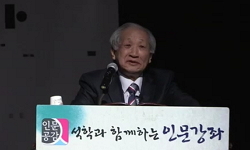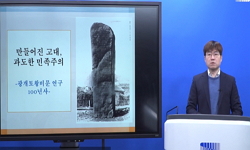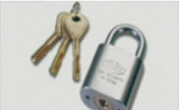5세기 후엽부터 6세기 중엽까지 신라는 소백산맥을 넘어 한강 상류역까지 많은 산성과 고분군을 조영한다. 강원지역 역시 이러한 흐름과 궤를 같이하는 것으로 보이는 산성과 고분군이 확인...
http://chineseinput.net/에서 pinyin(병음)방식으로 중국어를 변환할 수 있습니다.
변환된 중국어를 복사하여 사용하시면 됩니다.
- 中文 을 입력하시려면 zhongwen을 입력하시고 space를누르시면됩니다.
- 北京 을 입력하시려면 beijing을 입력하시고 space를 누르시면 됩니다.

양양 후포매리산성·고분군의 조영 시기와 그 배경 = The Construction Period and Background of Hupomae-ri Fortress and Ancient Tombs in Yangyang
한글로보기https://www.riss.kr/link?id=A107965411
- 저자
- 발행기관
- 학술지명
- 권호사항
-
발행연도
2021
-
작성언어
-
-
주제어
후포매리산성 ; 후포매리고분군 ; 조영 시기 ; 고구려 ; 신라 ; 경계 ; 북방 진출 ; Hupomae-ri Fortress ; Hupomae-ri Tombs ; construction period ; Goguryeo ; Silla ; border ; northward expansion
-
KDC
900
-
등재정보
KCI등재
-
자료형태
학술저널
-
수록면
127-152(26쪽)
-
KCI 피인용횟수
0
- DOI식별코드
- 제공처
-
0
상세조회 -
0
다운로드
부가정보
국문 초록 (Abstract)
5세기 후엽부터 6세기 중엽까지 신라는 소백산맥을 넘어 한강 상류역까지 많은 산성과 고분군을 조영한다. 강원지역 역시 이러한 흐름과 궤를 같이하는 것으로 보이는 산성과 고분군이 확인된다. 남한강 상류역의 정선과 영월, 단양 일대에서 확인되는 산성과 고분군이 그 예이다. 이와 함께 동해안의 고구려와 신라의 경계, 그리고 신라의 북방 진출과 관련하여 새로운 자료로서 양양 후포매리산성과 고분군에 대한 현지 조사를 실시하였다. 산성의 전체 평면형태와, 규모, 추정 문지 등을 확인할 수 있었고, 성내 채집 유물을 통해 산성의 조영 시기를 5세기 후엽으로 추정할 수 있었다. 이는 신라가 소백산맥을 넘어 남한강 상류역에 진출하는 시기, 동해ㆍ삼척지역에 주를 설치하는 시기와 같은 시기로 고구려를 극복하고 북진하는 일련의 과정과 연동된다는 점을 지적하였다. 후포매리산성과 고분군이 조영되기 이전까지 동해안의 고구려와 신라의 경계가 양양 포월리고분군와 원포리고분군 사이임을 제시하였다. 이 경계를 무너뜨리면서 후포매리산성을 조영하였고, 이후 북방 진출의 전초기지로 사용하였을 가능성을 제기하였다. 비록 채집 유물을 통한 연대 비정이지만 그나마 조영 시기를 추정할 수 있는 최북단의 신라 산성이라는 점에서 그 의의가 더욱 크다고 할 수 있을 것이다.
다국어 초록 (Multilingual Abstract)
From around the 6th century to the middle of the 6th century, Silla constructued many fortresses and ancient tombs in the area spanning from the Sobaek Mountain Range to the upper reaches of the Han River. In the Gangwon region, fortresses and ancient...
From around the 6th century to the middle of the 6th century, Silla constructued many fortresses and ancient tombs in the area spanning from the Sobaek Mountain Range to the upper reaches of the Han River. In the Gangwon region, fortresses and ancient tombs that appear to be in line with this trend have also been identified. Examples include fortresses and tombs identified in Jeongseon, Yeongwol, and Danyang areas of the upper reaches of the Namhan River. In addition, investigations were undertaken on the Hupomae-ri Fortress and tombs of Yangyang, as a means of obtaining new data on the boundary between Goguryeo and Silla and Silla s northern expansion in the Donghae region. The overall plan, size, and estimated gate space of the fortress could be confirmed, and the construction period of the fortress could be estimated to be in the late 5th century, based on artifacts collected in the fortress. It was pointed out that this is the same period as when Silla entered the upper reaches of the Namhan River beyond the Sobaek Mountains and the period when it established a state in the East Sea and Samcheok region, and it was linked with a series of processes of overcoming Goguryeo and advancing northwards. It was suggested that the boundary between Goguryeo and Silla on the east coast was between the Yangyang Powol-ri and Wonpo-ri ancient tombs prior to the construction of Hupomae-ri Fortress and tombs. The construction of Hupomae-ri Fortress acted to tear down this boundary, suggesting the possibility that it may have been used as an outpost for advancing to the north. Although the construction date was estimated based on artifacts collected through ground survey, the findings can still be regarded as meaningful, for they have contributed to establishing the dates of the northernmost Silla fortress.
목차 (Table of Contents)
- Ⅰ. 머리말 Ⅱ. 후포매리산성ㆍ고분군 연구와 조사현황 1. 기왕의 논의 2. 후포매리산성과 고분군의 현황 3. 후포매리산성 채집 유물 Ⅲ. 후포매리산성과 고분군의 조영 시기와 그 배경 Ⅳ. 맺음말
- Ⅰ. 머리말 Ⅱ. 후포매리산성ㆍ고분군 연구와 조사현황 1. 기왕의 논의 2. 후포매리산성과 고분군의 현황 3. 후포매리산성 채집 유물 Ⅲ. 후포매리산성과 고분군의 조영 시기와 그 배경 Ⅳ. 맺음말
참고문헌 (Reference)
1 한글학회, "한국지명총람-강원편-" 1967
2 박성현, "특집논문:5~6세기 고구려·신라의 경계와 그 양상" 한국역사연구회 (82) : 57-96, 2011
3 강원문화재연구소, "정선 송계리산성 일대 고분군 문화재 지표조사 보고서" 2018
4 이상수, "영동지방 고분의 분포양상과 그 성격" 한국상고사학회 2002
5 강릉대학교박물관, "양양군의 역사와 문화유적" 1994
6 프레시안, "양양 후포매리서 신라시대 추정 고분 추가 발견"
7 이뉴스투데이, "양양 후포매리 일원서 신라 고분군 ‘발견’"
8 홍영호, "양양 후포매리 신라 산성의 고찰" 한국고대학회 (30) : 285-317, 2009
9 강원고고문화연구원, "양양 후포매리 고분유적" 2020
10 강릉대학교박물관, "양양 포월리 주거지" 2002
1 한글학회, "한국지명총람-강원편-" 1967
2 박성현, "특집논문:5~6세기 고구려·신라의 경계와 그 양상" 한국역사연구회 (82) : 57-96, 2011
3 강원문화재연구소, "정선 송계리산성 일대 고분군 문화재 지표조사 보고서" 2018
4 이상수, "영동지방 고분의 분포양상과 그 성격" 한국상고사학회 2002
5 강릉대학교박물관, "양양군의 역사와 문화유적" 1994
6 프레시안, "양양 후포매리서 신라시대 추정 고분 추가 발견"
7 이뉴스투데이, "양양 후포매리 일원서 신라 고분군 ‘발견’"
8 홍영호, "양양 후포매리 신라 산성의 고찰" 한국고대학회 (30) : 285-317, 2009
9 강원고고문화연구원, "양양 후포매리 고분유적" 2020
10 강릉대학교박물관, "양양 포월리 주거지" 2002
11 최병현, "신라후기양식토기의 편년" 영남고고학회 (59) : 111-174, 2011
12 "삼국사기"
13 문화공보부 문화재관리국, "문화유적총람" 1977
14 김건우, "동해·삼척지역 신라 횡혈계 묘제 연구" 강원대학교대학원 2021
15 홍보식, "강원지역의 신라고분 전개 양상" 강원고고학회 2007
16 박수영, "강원의 신라 문화와 역사" 국립춘천박물관 2013
17 강원도사편찬위원회, "강원의 성곽과 봉수" 2019
18 강원도사편찬위원회, "강원의 고분 문화" 2020
19 신종원, "강원도 땅이름의 참모습" 경인문화사 2007
20 강릉원주대박물관, "강릉 주문리 고분군" 2011
21 강릉대학교박물관, "강릉 영진리 고분군" 2007
22 양양군, "襄州誌" 1990
23 조선총독부, "朝鮮寶物古蹟調査資料"
24 조선총독부, "朝鮮地誌資料"
25 홍보식, "6~7세기대 신라고분 연구" 부산대학교 대학원 2001
26 윤성호, "5세기 중후반 신라 소지마립간대의 대고구려 관계" 한국학연구소 51 : 1-34, 2019
동일학술지(권/호) 다른 논문
-
- 중부고고학회
- 박중균 ( Park Jung-gyun )
- 2021
- KCI등재
-
- 중부고고학회
- 崔正凡(Choi, Jung-Bum)
- 2021
- KCI등재
-
- 중부고고학회
- 박경신(Park, Kyoungshin)
- 2021
- KCI등재
-
- 중부고고학회
- 박성희(Park, Sung-Hee)
- 2021
- KCI등재
분석정보
인용정보 인용지수 설명보기
학술지 이력
| 연월일 | 이력구분 | 이력상세 | 등재구분 |
|---|---|---|---|
| 2027 | 평가예정 | 재인증평가 신청대상 (재인증) | |
| 2021-01-01 | 평가 | 등재학술지 유지 (재인증) |  |
| 2020-07-29 | 학술지명변경 | 외국어명 : archaeology -> Archaeology: Journal of the Jungbu Archaeological Society |  |
| 2018-01-01 | 평가 | 등재학술지 유지 (등재유지) |  |
| 2015-01-01 | 평가 | 등재학술지 유지 (등재유지) |  |
| 2011-01-01 | 평가 | 등재학술지 선정 (등재후보2차) |  |
| 2010-04-23 | 학회명변경 | 한글명 : 서울경기고고학회 -> 중부고고학회영문명 : Seoul Kyonggi Archaeology Society -> The Jungbu Archaeological Society |  |
| 2010-01-01 | 평가 | 등재후보 1차 PASS (등재후보1차) |  |
| 2009-01-01 | 평가 | 등재후보학술지 유지 (등재후보1차) |  |
| 2007-01-01 | 평가 | 등재후보학술지 선정 (신규평가) |  |
학술지 인용정보
| 기준연도 | WOS-KCI 통합IF(2년) | KCIF(2년) | KCIF(3년) |
|---|---|---|---|
| 2016 | 1.04 | 1.04 | 0.98 |
| KCIF(4년) | KCIF(5년) | 중심성지수(3년) | 즉시성지수 |
| 0.98 | 0.95 | 2.135 | 0.43 |




 스콜라
스콜라






